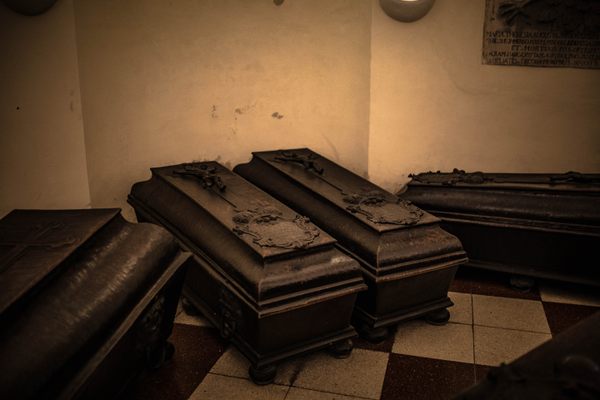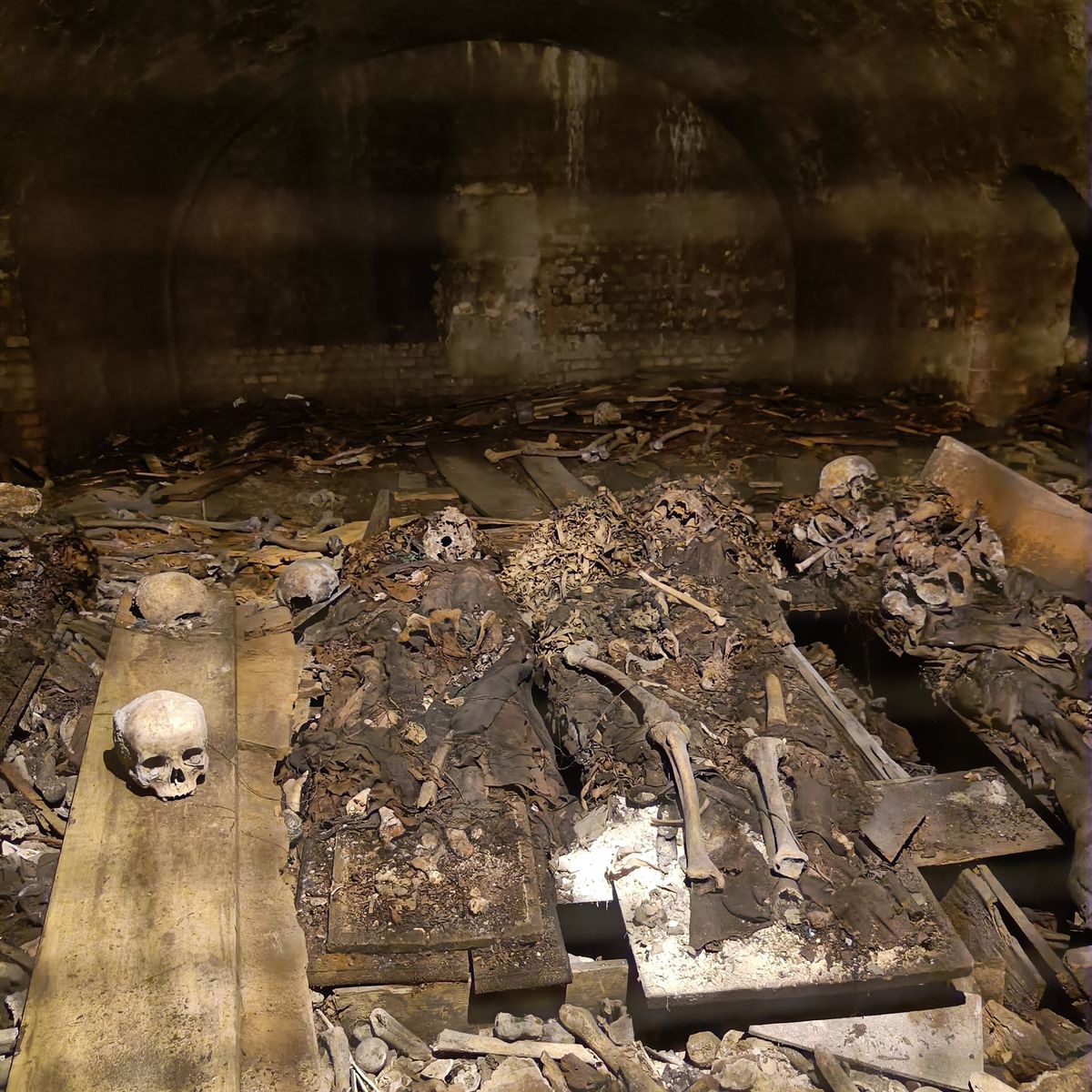About
In the middle of Vienna, the dark and imposing St. Stephen's Cathedral (Stephansdom) draws thousands of tourists to gaze at the grand architecture. But there is something to be seen below as well: just beneath the stone floors lie the skeletal remains of over 11,000 people.
Surprisingly few visitors opt to enter the crypt. The entrance to the underground tomb is hidden in plain sight, as an innocuous staircase on the left side of the main floor. The vast Stephansdom crypt is divided into a number of smaller crypts and catacombs, and is still an active burial spot. The most recent tenant to move in was Franz Cardinal König, the archbishop of Vienna, who was laid to rest there in 2004. Most of the bodies of Habsburg royalty are interred nearby in the Imperial Crypt on Neuer Markt square.
In another section, known as the ducal crypt, the organs of princes, queens, and emperors are kept. Along with some bodies and hearts, over 60 jars of imperial intestines rest in the ducal crypt, including one containing Empress Maria Theresia's sovereign stomach. Not long ago, the seals on one jar broke, leaking 200-year-old visceral fluid onto the floor. The stink was apparently so awful that it took a day or two before someone was willing to go down and address the situation.
In 1735, Vienna experienced an outbreak of the bubonic plague. In an effort to keep the Black Death at bay, the numerous cemeteries surrounding the Stephansdom and the charnel house (a building for storing stacked bones) were emptied, and thousands of bones and rotting corpses were thrown down into the pits dug in the floor of the crypt. The downside to this arrangement was that the smell of the catacombs would occasionally waft up into the church and make religious services impossible.
To combat the unfortunate smell, as well as make room for more bodies, a few unlucky prisoners were lowered into the pits where they were forced to scrub the rotting flesh off the plague-ridden and disordered bodies, snapping and breaking the skeletons down to individual bones, and stacking them into neatly ordered rows, skulls on top. It seems that they never finished the job--to this day, one can still find sections of the crypt scattered with piles of disorganized bones and deteriorating coffins.
Guided tours only. On special occasions like “die lange Nacht der Kirche” (“the long night of churches,” a yearly event), the crypt is open to the public.
Related Tags
Know Before You Go
Inside the Cathedral, meet at the stairs to the catacombs, which are on the left side near the back as you enter the church. Tours happen roughly every 30 minutes.
Community Contributors
Added By
Published
May 29, 2010


































































































